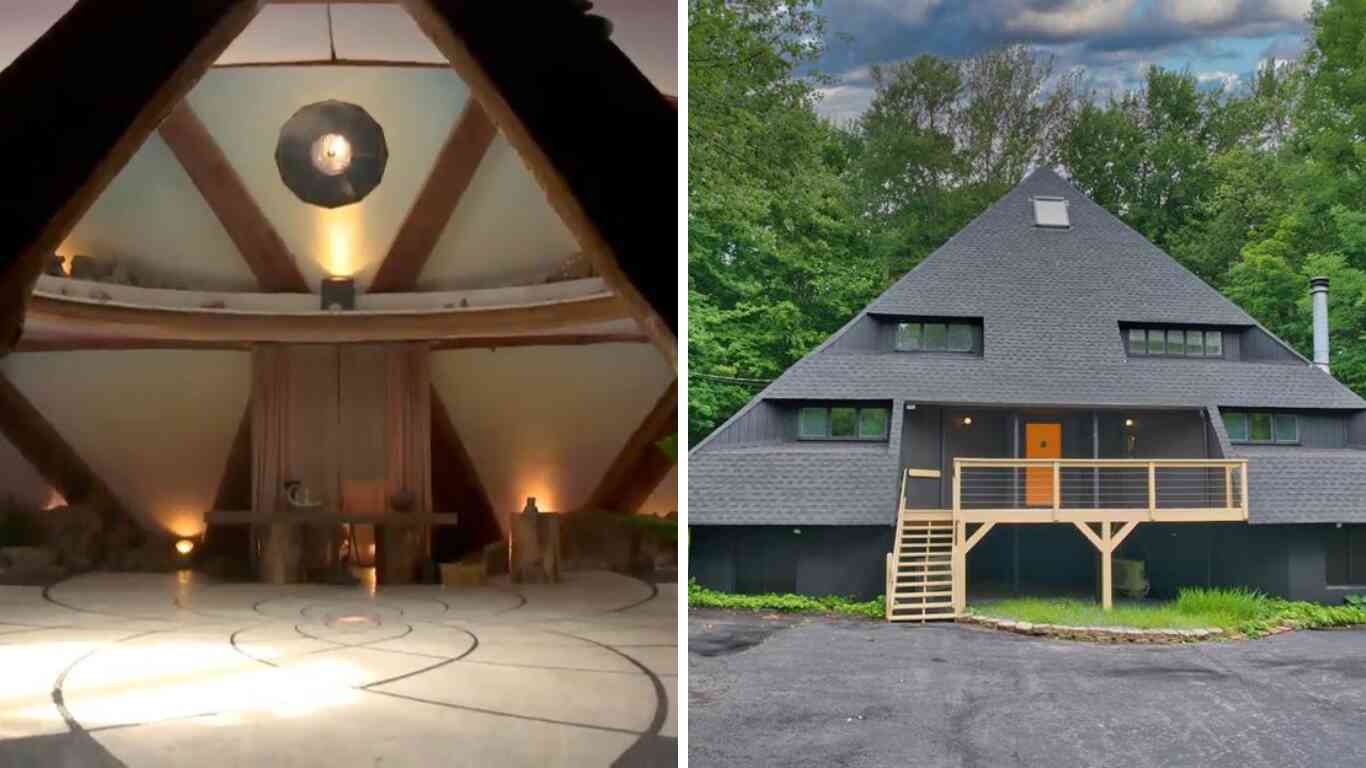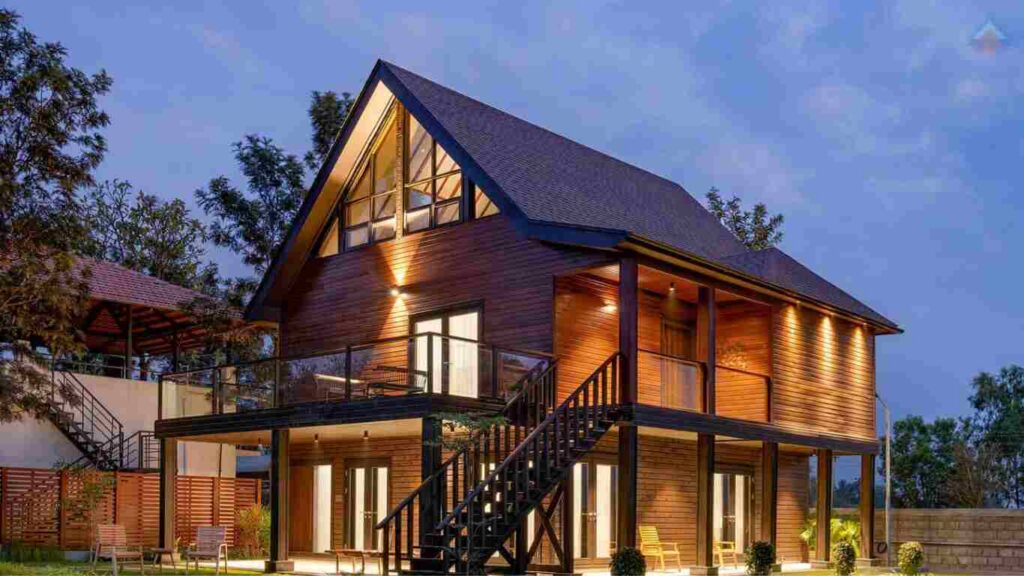Pyramid style houses have captured the imagination of architects and homeowners alike. With their distinctive triangular shape and unique structural benefits, they are more than just a visual curiosity; they represent a harmonious blend of design, comfort, and sustainability in modern architecture. As we delve into the characteristics and advantages of these structures, it becomes clear that the pyramid style house offers a refreshing alternative to traditional home designs.
| Attribute | Details |
|---|---|
| Architectural Style | Pyramid |
| Origin | Ancient Egypt, Mesoamerica |
| Construction Period | Over 2700 years (Old Kingdom to Ptolemaic) |
| Materials Used | Stone, brick, wood, modern materials |
| Cultural Significance | Funerary practices, religious sites |
| Notable Examples | Great Pyramid of Giza, Pyramid of the Sun |
In our fast-paced world, where urban living can lead to cramped spaces and environmental concerns, the pyramid house stands out for its efficient use of space and resources. The importance of thoughtful design cannot be overstated, as it plays a crucial role in enhancing our quality of life. Comfort, too, is paramount; after all, our homes should be sanctuaries that foster well-being. Finally, sustainability is an urgent need of the modern age, and pyramid houses offer exciting possibilities in this regard.
this guide will provide valuable insights into the world of pyramid houses.
Understanding Pyramid Style Houses

Definition and Characteristics
Pyramid style houses are characterized by their distinctive triangular silhouette and sloping roofs that converge at a point. This unique geometry not only sets them apart visually but also contributes to their structural integrity. Traditionally, the pyramid shape has been associated with stability and strength, qualities that are essential in architectural design.
Historically, pyramid structures date back to ancient civilizations, such as the Egyptians and the Mayans, who built monumental pyramids for religious and ceremonial purposes. Over time, this design has evolved from monumental architecture to residential applications, adapting to modern needs while retaining its core principles.
Types of Pyramid Style Houses
Pyramid style houses come in various forms, catering to different needs and preferences. They can be designed as single-family homes, offering a cozy living environment, or as multi-family units, providing communal living opportunities. Here are some notable variations:
- Residential Pyramids: These are often used for private homes, featuring spacious interiors and unique aesthetics.
- Community Pyramids: Designed for multiple families, these structures promote a sense of community and shared space.
Across the globe, pyramid houses can be found in different cultural contexts. For example, some Asian countries have embraced pyramid designs to enhance feng shui principles, while modern eco-villages in Europe are experimenting with these shapes to promote sustainability.
Design Benefits of Pyramid Style Houses
Aesthetic Appeal
One of the most striking features of pyramid style houses is their aesthetic appeal. The unique shape creates a visually engaging structure that stands out in any neighborhood. The sloping roofs and angular design can beautifully integrate with natural landscapes, enhancing the overall beauty of the environment.
Space Efficiency
When it comes to space utilization, pyramid houses excel. The cubic space within these homes is often more efficiently used compared to traditional designs. The vertical nature of the pyramid allows for ample living space, making it possible to have multiple floors without sacrificing comfort.
Comparison of Space Utilization
| Feature | Traditional Design | Pyramid Style House |
|---|---|---|
| Floor Area Efficiency | Moderate | High |
| Vertical Space Utilization | Low | High |
| Usable Living Space | Limited | Expanded |
Natural Lighting and Ventilation
Another key benefit of pyramid style houses is their ability to maximize natural light and ventilation. The shape of the roof encourages sunlight to flood into the interior spaces, creating bright and airy environments. Additionally, the design allows hot air to rise, promoting natural ventilation. This feature not only enhances comfort but also reduces the need for artificial lighting and air conditioning, leading to lower energy bills.
Comfort Features of Pyramid Style Houses
Thermal Performance
The shape of pyramid style houses contributes significantly to their thermal performance. The sloped roofs allow for better insulation, helping to maintain comfortable indoor temperatures throughout the year. This design minimizes the need for heating in winter and cooling in summer, making these homes more energy-efficient.
Acoustic Benefits
Sound quality is another important aspect of comfort. Pyramid houses often have better acoustic properties due to their shape, which can help reduce noise pollution from outside. This feature is particularly beneficial for urban dwellers seeking tranquility in their homes.
Health and Well-being
The connection between architectural design and psychological well-being is a compelling reason to consider pyramid style houses. The open and spacious interiors can foster a sense of peace and relaxation. Moreover, many pyramid homes incorporate natural materials, such as wood and stone, which contribute to improved indoor air quality. This focus on health and comfort makes pyramid houses appealing to those concerned about their well-being.
Sustainability Aspects of Pyramid Style Houses
Eco-friendly Materials
Sustainability is a crucial consideration for modern architecture. Pyramid houses can be constructed using a variety of eco-friendly materials. Common choices include bamboo, recycled wood, and other renewable resources that minimize environmental impact.
Benefits of Using Renewable Resources
- Reduced Carbon Footprint: Sustainable materials often have a lower environmental impact during production.
- Durability: Many renewable materials are designed to last, reducing the need for frequent replacements.
Energy Efficiency
When it comes to energy consumption, pyramid style houses have an edge over traditional designs. Their unique shapes allow for better energy efficiency, reducing the overall demand for heating and cooling. Many pyramid houses can also integrate renewable energy sources, such as solar panels, further enhancing their sustainability.
Resilience to Natural Disasters
Pyramid houses are often praised for their structural resilience. The triangular shape provides stability, making these homes more resistant to natural disasters such as earthquakes and hurricanes. The design ensures that the weight is evenly distributed, reducing the likelihood of structural failure during extreme weather events.
The Future of Pyramid Style Houses
Trends in Architecture
As urban living continues to evolve, there is a growing interest in unconventional designs like pyramid style houses. Their unique aesthetics and practical benefits make them a compelling choice for modern housing. As cities grapple with space constraints and environmental challenges, pyramid houses can play a significant role in future urban planning.
Innovations in Construction
Advances in technology are also making it easier to construct pyramid style houses. Innovations such as prefabrication and modular building techniques can streamline the construction process, making these homes more accessible to a broader audience. This shift could pave the way for a new wave of pyramid homes in the coming years.
Also read ken griffey jr house.
